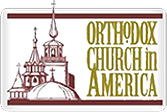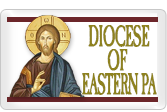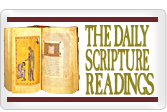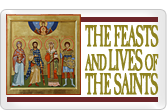The Church is Christ among His Faithful, and we are a local community of His Church. As such, our gathering place that has been consecrated (set aside for worship) is a special place (in traditional Orthodox terminology, a "temple" or the "house" of the Lord).
As you enter the church building, you will notice a lot of "paintings." These are icons, and are part of the ancient Christian heritage going back to the time of the Apostles. While the old Testament forbid idols of other gods, God not only allowed for but commanded images (icons) of angels to flank the tabernacle and temple. When Christ came, the unimagable became able to be imaged (the Logos became flesh and dwelt among us, full of grace and truth). He took on matter that matter may be sanctified. In the first chapter of the Gospel of John we recall the encounter with Jesus: Nathanael answered Him, "Rabbi, You are the Son of God; You are the King of Israel." Jesus answered and said to him, "Because I said to you that I saw you under the fig tree, do you believe? You will see greater things than these." And He said to him, "Truly, truly, I say to you, you will see the heavens opened and the angels of God ascending and descending on the Son of Man." Icons are windows into heaven, and a reminder that Christ came to save the whole cosmos.
You will also notice that our church building, as with other Orthodox Christian temples (consecrated church buildings), faces east. This is due to the fact that Christ Himself is called in Scripture "the East from on high" (Luke 1.78, often translated "dayspring" or "orient," but Anatoli literally means the "east"). Christ Himself mentions that His coming is from the east: "as lightening comes from the East and flashes to the West, so shall be the coming of the Son of Man" (Matt. 24.27).
Everything in the architecture of the Orthodox Church has meaning, and many times multiple levels of meaning. One example is that Orthodox temples (church buildings) are set up in the pattern of the ancient tabernacle as well as the temple in Jerusalem. The outer narthex represents earth, the nave (main part of the church) represents heaven, and the altar area represents the throne of God. There are two significant differences, however. One is the iconostasis (the "wall" of icons), which signify the unity of earth to heaven (reminding us that the "wall of separation" has been torn down, and a wall of unity built). The other is that the curtain is drawn back in significant parts of the service, to remind us that the curtain of the temple was torn at Christ's crucifixion giving access of humankind to its Creator.
Orthodox liturgy is designed to engage all 5 senses: Sight, hearing, touch (veneration) smell (incense), and taste (Communion, blessed foods, holy water, etc.).
Speaking of the Church, the book of Hebrews states: "But you have come to Mount Zion and to the City of the living God, the heavenly Jerusalem, to an innumerable company of angels, to the general assembly and church of the firstborn who are registered in heaven, to God the Judge of all, to the spirits of just men made perfect, to Jesus the Mediator of the new covenant, and to the blood of sprinkling that speaks better things than that of Abel." (Heb. 12.22-24)
Wed
12Mar11:00AM-
1:00pm Silent Pray
4:00PM Confession
5:00PM Presanctified LiturgyThu
13Mar6:00 PM House BlessingFri
14Mar5:00 Panikhida
